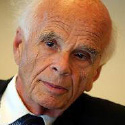

The Evidence for Reincarnation
by Ervin Laslo & Anthony Peake
Stories suggestive of reincarnation are not limited, whether geographically or culturally. They occur in all corners of the planet and among people of all cultures.
The Reincarnation-Type Experiences
The pioneering research on recent reincarnation stories is the work of Ian Stevenson, a Canadian-American psychiatrist who worked at the University of Virginia School of Medicine. During more than four decades, Stevenson investigated the reincarnation-type experiences of thousands of children, both in the West and in the East. Some of the past life memories recounted by the children have been verified as the experience of a person who had lived previously, and whose death matched the impressions reported by the child. Sometimes the child carried a birthmark associated with the death of the person with whom he or she identified, such as an indentation or discoloration on the part of the body where a fatal bullet entered, or a malformation on a hand or the foot the deceased had lost.
The Case of the Paddy Fields Tragedy
A case reported by Stevenson involved a Sri Lankan girl who remembered a past life in which she had drowned in a flooded paddy field. She described that a bus had driven past and splashed her with water just before she died. Subsequent research searching for the proof of this reincarnation found that a girl in a nearby village had drowned after she had stepped back to avoid a passing bus while walking on a narrow road above flooded paddy fields. She fell backward into deep water and died. The girl who manifested this experience had, from a very early age, shown an irrational fear of buses; she would also get hysterical if taken near deep water. She had a fondness for bread and had a liking for sweet food. This was unusual, in that her family did not like either. However, the previous personality was noted for both of these preferences.
The Case of Swarnlata Mishra
Another typical Stevenson case was that of Swarnlata Mishra, born in a small village in Madhya Pradesh in 1948. When she was three years old she began having spontaneous past-life memories of being a girl called Biya Pathak, who lived in a village more than a hundred miles away. She described that the house Biya lived in had four rooms and was painted white.
She began to sing songs that she claimed she used to know, together with complex dance routines that were unknown to her present family and friends. Six years later she recognized some people who had been her friends in the past life. This stimulated her father to start writing down what she said and searching for proof of her reincarnation.
Her case generated interest outside of the village. One investigator who visited the city discovered that a woman who matched the description given by Swarnlata had died nine years previously. Investigations subsequently confirmed that a young girl called Biya had lived in just such a house in that town.
Swarnlata’s father decided to take his daughter to the town and to have her introduced to members of Biya’s family. As a test to see if she indeed was a reincarnated personality, the family introduced people who were not related to the child. Swarnlata immediately identified these individuals as being imposters. Indeed some details of her past life memories were so precise that all were amazed.
Ancestral Memories of Sam Taylor
Another case offering substantial proof of reincarnation involved an eighteen-month-old boy called Sam Taylor. As his diaper was being changed he looked up at his father and said, “When I was your age I used to change your diapers.” Later Sam disclosed details about his grandfather’s life that were completely accurate. He said that his grandfather’s sister had been murdered and that his grandmother had made milkshakes for his grandfather using a food processor. Sam’s parents were adamant that none of these subjects had been discussed in his presence. When he was four years old, Sam was shown a group of old family pictures spread out on a table. Sam happily identified his grandfather every time with the announcement, “That’s me!” In an attempt to test him, his mother selected an old school class photograph showing the grandfather as a young boy. There were sixteen other boys in the photograph. Sam immediately pointed to one of them, once again announcing that that was him. He was right.
What the Evidence Tells Us
Reincarnation-type experiences can be vivid and convincing to the extent that they appear to be testimony and evidence that a previously living personality has been incarnated in the subject. This belief is strengthened by the observation that birthmarks on the body of the subject correspond to the bodily features of the person whom he or she seems to incarnate. This is most strikingly the case when the past life personality suffered bodily injury. The corresponding marks or deformations sometimes reappear in the subject, seeming to offer proof that reincarnation is indeed occurring.
Many observers of this phenomenon, including Stevenson himself, held that matching birthmarks are significant evidence for reincarnation. However, the coincidence of birthmarks and other bodily features in a child with the fate of a previously existing person is not necessarily assurance that that person is reincarnated in the child. It could also be that the brain and body of the child with the given birthmarks and bodily features are especially adapted to recall the experience of a personality with analogous birthmarks and deformities.
Ervin Laszlo is a systems scientist, integral theorist, and classical pianist. Twice nominated for the Nobel Peace Prize, he is the founder and president of Ervin Laszlo Center for Advanced Study. Anthony Peake is a writer, researcher, and author of 7 books. This article was excepted from The Immortal Mind: Science and the Continuity of Consciousness beyond the Brain by Ervin Laszlo and contributor Anthony Peake.